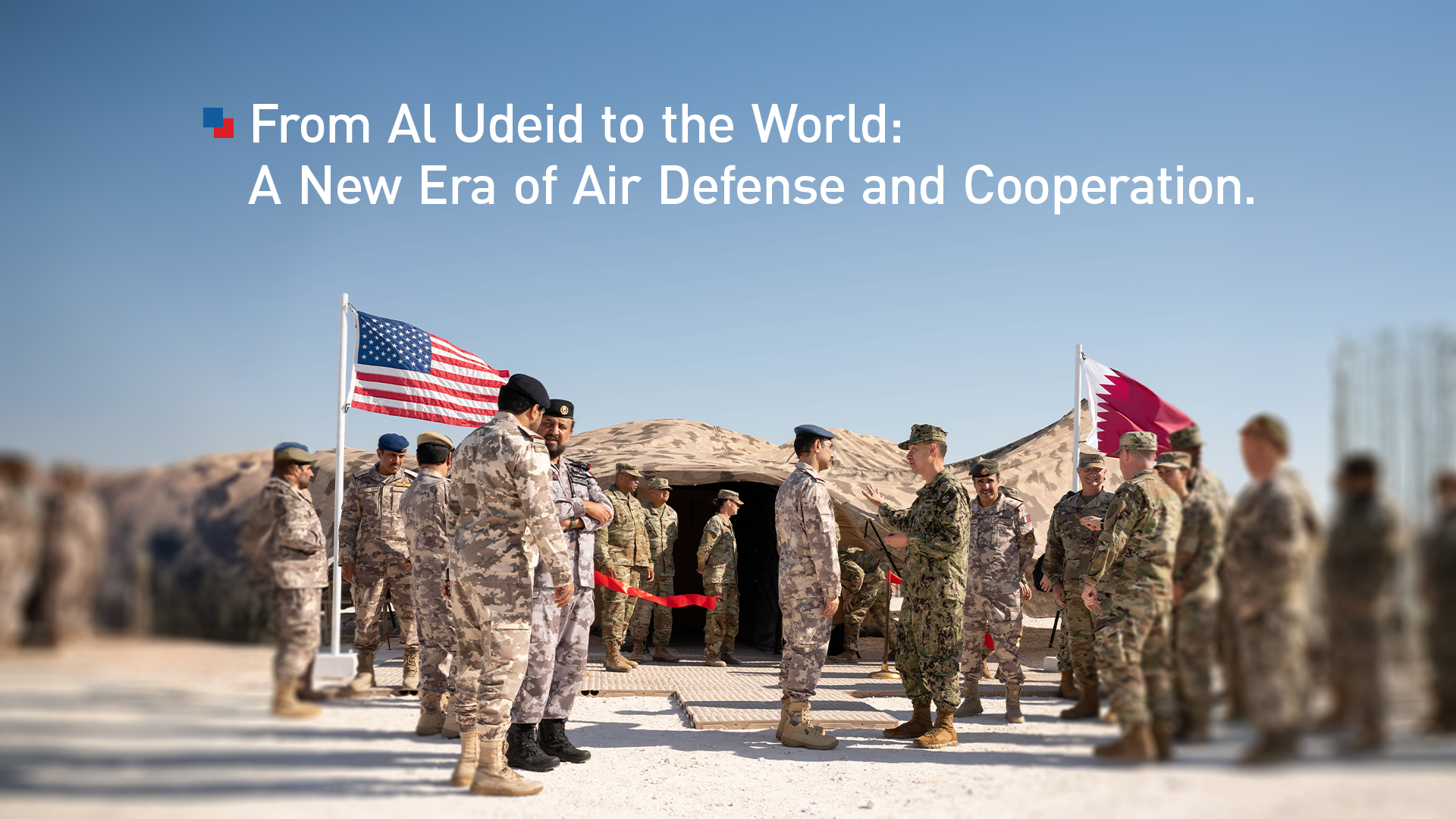CENTCOM and Qatar Open First Joint Air Defense Command in Middle East
The new Combined Command Post at Al Udeid Air Base marks a milestone in U.S.-Qatari defense ties, signaling a strategic realignment amid rising regional tensions, great-power competition, and ongoing efforts to counter Iran’s influence.

ERBIL (Kurdistan24) — The United States Central Command (CENTCOM) and the State of Qatar on Monday inaugurated the first bilateral Combined Command Post for air defense in the Middle East at Al Udeid Air Base, a move that underscores Washington’s deepening security partnership with Doha amid shifting geopolitical dynamics across the region.
The ceremony, attended by CENTCOM Commander Adm. Brad Cooper and Qatar’s Chief of Staff Lt. Gen. Jassim Al-Mannai, marked what both sides described as a new era of regional defense cooperation.
“The military-to-military relationship with Qatar is stronger than ever,” Adm. Cooper said. “The new Combined Command Post for air defense will enhance regional security cooperation today and in months and years to come.”
U.S. Central Command (CENTCOM) opened the first bilateral Combined Command Post for air defense in the Middle East with Qatar at Al Udeid Air Base, Nov. 3. CENTCOM Commander Adm. Brad Cooper and Chief of Staff of Qatar Armed Forces Lt. Gen. Jassim Al-Mannai celebrated the… pic.twitter.com/PAoMKLd5rz
— U.S. Central Command (@CENTCOM) November 3, 2025
The opening of the joint command post comes only weeks after the White House issued a formal U.S. security guarantee to Qatar—a landmark policy shift committing Washington to regard any armed attack on Qatari territory as a direct threat to the United States.
That guarantee, signed into law by President Donald Trump on October 1, followed an unprecedented Israeli airstrike on Doha, which the Israel Defense Forces claimed targeted senior Hamas leaders.
The incident sent shockwaves through the Gulf and accelerated U.S. efforts to institutionalize Qatar’s defense architecture as part of a broader Middle Eastern security network anchored by American power.
The establishment of the Combined Command Post at Al Udeid Air Base—already home to the largest U.S. military facility in the region—symbolizes a major leap in interoperability, command integration, and mutual defense readiness.
It also coincides with Qatar’s decision to host its own air force facility at Mountain Home Air Base in Idaho, a project unveiled by U.S. Defense Secretary Pete Hegseth earlier in October.
Implications for Regional Security and Power Balance
From a strategic perspective, the new joint air defense hub solidifies Qatar’s role as the central node of U.S. air power in the Gulf, reinforcing deterrence not only against traditional state threats but also against the expanding reach of Iran and its regional proxies.
The facility allows real-time coordination between Qatari and U.S. forces, enhancing early-warning systems, missile interception capability, and integrated air defense across the Gulf.
This cooperation strengthens the shield against potential Iranian missile and drone threats—capabilities Tehran has demonstrated through its allies in Yemen, Iraq, Lebanon, and Syria.
For Israel and the United States, the move represents a concrete step in the ongoing effort to constrain Iran’s influence and prevent it from achieving a nuclear weapons capability.
The improved defensive posture of Qatar—a U.S. ally with strong diplomatic channels to Iran—adds a stabilizing layer to the region’s security web while also indirectly supporting Israeli deterrence goals.
For Qatar, the joint command post is not merely a defense measure—it is a strategic elevation of status. Once criticized by some Gulf neighbors for its independent foreign policy, Doha now stands as Washington’s closest military partner in the Arab world, wielding both diplomatic and security leverage.
Qatar’s dual identity—as a mediator in regional conflicts and now a frontline ally in Western defense architecture—gives it an unparalleled balancing role. By deepening its defense integration with the United States, Qatar effectively insulates itself against regional isolation while enhancing its influence in negotiations from Gaza to Tehran.
Moreover, the timing—amid a broader U.S. retrenchment debate and increased Chinese and Russian engagement in the Middle East—underscores Washington’s decision to double down on Qatar as a stable, trusted partner for long-term strategic positioning.
Washington’s Strategy Amid Great-Power Competition
For the United States, the move fits squarely within a broader strategy to maintain dominance in Middle Eastern security affairs despite intensifying competition from China and Russia.
Both Beijing and Moscow have been expanding their military and economic footprints across the region—China through energy and infrastructure diplomacy under the Belt and Road Initiative, and Russia through arms sales and tactical partnerships, particularly with Iran and Syria.
By establishing permanent, integrated command structures like the one in Qatar, Washington signals that it is not retreating from the region but reshaping its presence—prioritizing strategic partnerships and forward-deployed capabilities over large-scale troop commitments.
The Combined Command Post at Al Udeid thus becomes not just a military installation but a geopolitical statement: that U.S. influence in the Middle East will endure, rooted in alliances that blend hard security with political alignment and technological superiority.
The inauguration of the first U.S.-Qatar Combined Command Post for air defense marks a pivotal moment in the region’s evolving security landscape. It reaffirms Washington’s enduring role as the guarantor of Gulf stability, strengthens Qatar’s position as both a mediator and a military hub, and reinforces the Western coalition’s front line against Iranian expansionism.
At a time when the Middle East is being reshaped by new rivalries, the move sends a clear message: the United States remains firmly anchored in the Gulf, and Qatar has become central to its long-term strategy of deterrence, partnership, and power projection.
